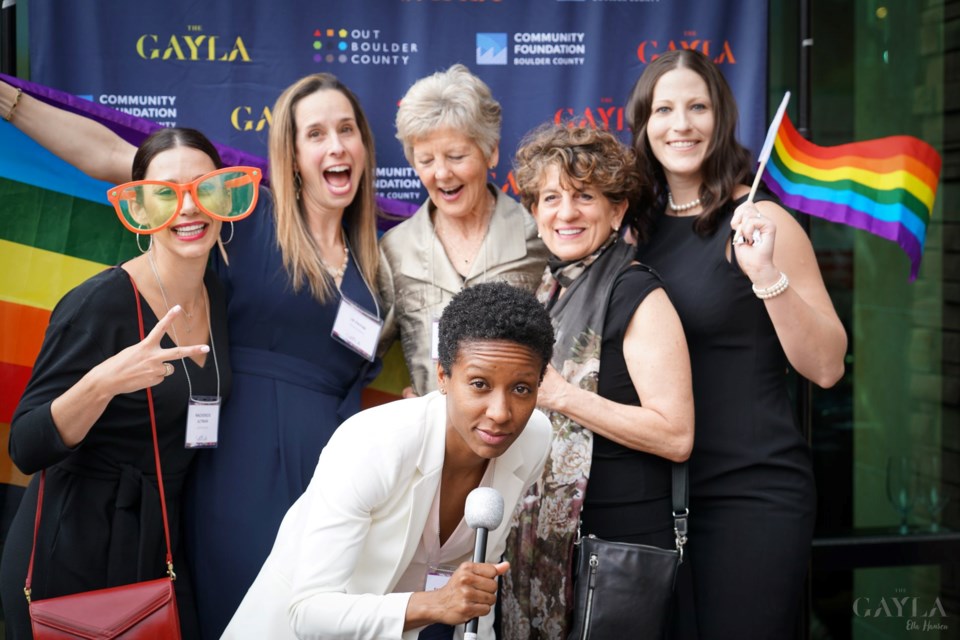Most recently, the murder of George Floyd has pressed upon many the importance of diversity, leading to real work being done. Diversity has been a topic of conversation for many years and incompasses race, ethnicity and sexual orientation and identity.
Throughout Boulder County, many organizations are working to combat the increasing rate at which members of minority groups may feel like they need to hide parts of their identities. These public service organizations such as Out Boulder County, or OBC, the Boulder County Area on Aging, or AAA, and the city of Longmont cultivate diversity, equity and inclusion – albeit by using a variety of different methods.
Since its birth in 2004, Out Boulder County has been dedicated to “(facilitating) connection, advocacy, education, research and programs to ensure LGBTQ+ people and communities can thrive in Boulder County and beyond,” according to the OBC website.
OBC’s staff of 10 — all of whom are LGBTQ+ and five of whom are people of color — reflect a diverse community within Boulder County.
According to OBC’s Executive Director Mardi Moore, other organizations can help foster diversity friendly communities for minority groups – both within the workplace and for the individuals they serve – by adding diversity to their staff.
“Representation matters because we all have different perspectives and histories, and our personal experiences often inform how we are in a workplace and where we see barriers where other people don’t see barriers,” Moore said.
A barrier for some individuals might occur within an organization if, for example, that organization didn’t consider the importance of having its staff include their pronouns in their email signatures, Moore explained.
“Is it because the people at the organization don’t respect transgender people (enough to include their pronouns in their email signature)? Probably not, but it’s because they haven’t encountered someone who views that as important,” Moore said.
Adding pronouns may not seem important to everyone but Moore says minority groups can often see barriers where others wouldn’t.
“Someone who views that (including pronouns in an email signature) as important,” whether they’re a client or a new staff member, may envision a barrier between themself and this organization as a result of its failure to be inclusive in this way, which could deter them from wanting to be a part of such an organization, Moore stated.
Representation by a diverse group can help eliminate these barriers and make the issues seem commonplace within an organization, Moore said.
Michael Chifalo – who identifies as a gay man – is one such representative. He took the job as the LGBTQ+ program specialist at the Boulder County AAA about four years ago. Chifalo works with ageing LGBTQ+ member to ensure their needs are properly met.
Chifalo’s arrival marked the first time AAA had a full-time position dedicated to representing the needs of the LGBTQ+ older adult community. However, he wasn’t the first person at AAA to do this kind of work.
Longtime AAA Employee Teresa DeAnni – who idenitifies as a lesbian woman – made the agency’s services and the services of other assisted living and long term care facilities accessible to the LGBTQ+ community, she said.
“There’s changes in each generation and issues with each generation, but (AAA) is committed to ensuring a safe space for people and making sure that Boulder County – if not Colorado or the nation – is meeting the criteria to make things safe for people, make people more aware and also allow older adults to be themselves wherever they are,” DeAnnie said.
“Without actually having a person whose focus it is to ask what it is that a community needs, we can’t respond,” said AAA’s Elder Rights Program Manager, Erica Corson. “What seems to be totally obvious isn’t unless we have (Chifalo) who’s intended to reach out to that community and know that we’re developing services in response to what is needed.”
The city of Longmont also relies on a group of individuals to relay the community’s needs. It designates staff members to work with specific communities, according to Karen Roney, the former community services director for the city of Longmont, rather, “our staff plans programs and services through an equity lens and focuses on ways we can make sure our services are welcoming for all,” she said.
For Roney and others employed by the city of Longmont’s Community Services Department, this kind of work includes connecting regularly with cultural brokers throughout the community to continually learn and enhance their efforts, she added.
Work on behalf of the city of Longmont to foster diversity, equity and inclusion in the community is also carried out by an equity team, formed by the city in October 2019.
According to Carmen Palacios-Ramirez, the Community and Neighborhood resource manager and member of the city of Longmont’s Equity Team, the team is composed of approximately 20 individuals from different departments of the city – from fire, police, public works and community services, she said.
“(The equity team is) really focused on answering, ‘how do we build into our foundation value and build outcomes where someone’s identity is independent?’ Palacios-Ramirez said. “Also, ‘how do we make sure that people have equitable access to opportunities and resources and powers?’”
The team, which ultimately aims to use strategic planning to ensure the city’s programs and services are equitable and accessible to all, is currently undergoing internal training to “gain a baseline understanding of what equity is, the difference between equity and equal and how to develop an organization that fosters racial and social equity,” Palacios-Ramirez said.
“We’re trying to do the work in our own backyard first – internally – and then we’ll provide equitable services to all in the community,” she added.



